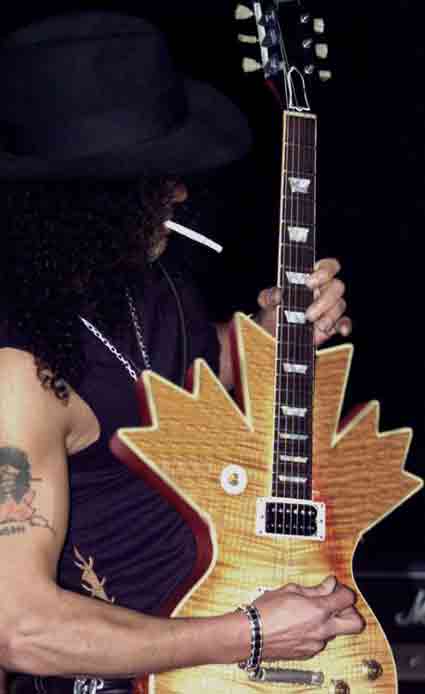Adjusting the Truss Rod in your guitar to doctor up your action on the fretboard is something that I don’t think I’ll try on my beloved Larrivee L-03. This is something that should be left to the professionals, unless your doing this on your old beater guitar before attempting this on your good axe!
The Truss Rod in a guitar is embedded in the middle of a guitar’s fretboard, closer to the bottom of it, moving from the head of the guitar to it’s body. It consists of 1 or 2 metal bars that are designed to adjust/move the neck of the guitar up or down making it easier to play, get a unique/certain sound that you desire or to help out that buzzing sound that one gets when playing a note somewhere on the fretboard.
 At one end of the Truss Rod there is a nut that allows you to adjust it. It can be accessed by either the head of the guitar (normally there is a plastic cover over the opening) or located where the fretboard meets the body of the guitar. The other end is where the rod is anchored or fixed into position. This will give the adjusting end the tension that you will need to move the Truss Rod.
At one end of the Truss Rod there is a nut that allows you to adjust it. It can be accessed by either the head of the guitar (normally there is a plastic cover over the opening) or located where the fretboard meets the body of the guitar. The other end is where the rod is anchored or fixed into position. This will give the adjusting end the tension that you will need to move the Truss Rod.
The 2 types of truss rods are single and double action.
The single truss rod allows you to move the guitar neck in one direction (or as some technicians call one way) only. This makes the neck go in an up-bow or upwards direction. If you place your guitar on a flat surface and look at it sideways, the head of it will be higher then the body of the guitar. The double lets you go both directions.
So this is a basic introduction to what the Truss Rod does in your guitar. If there is some interest on this topic here on this blog, then I will do some more detailed updates in the future!
Keep on Jammin’
Here is a great book for the intermediate guitarist that wants to know a little more about how his/her instrument works. This might make a neat Christmas present for the guitar player in your life!

 I take apart everything I want to play into so many sections and perfect, in my mind that is, how they are reproduced and flow from one part of the song to the next. I also have to anticipate how to execute it if say a string breaks in a theatre or bar in the middle of song. I sometimes find that it’s hard to juggle all those issues and bond them together flawlessly into my act without losing my mind in front of an audience while giving the impression that it is all in a days work for a guitarist/performer!
I take apart everything I want to play into so many sections and perfect, in my mind that is, how they are reproduced and flow from one part of the song to the next. I also have to anticipate how to execute it if say a string breaks in a theatre or bar in the middle of song. I sometimes find that it’s hard to juggle all those issues and bond them together flawlessly into my act without losing my mind in front of an audience while giving the impression that it is all in a days work for a guitarist/performer!